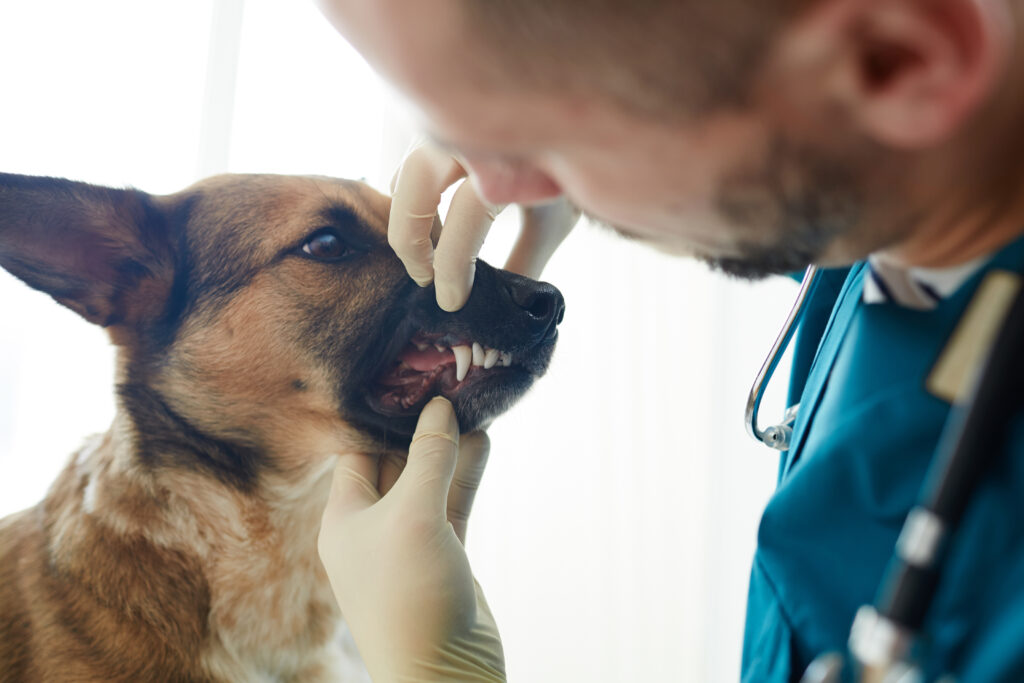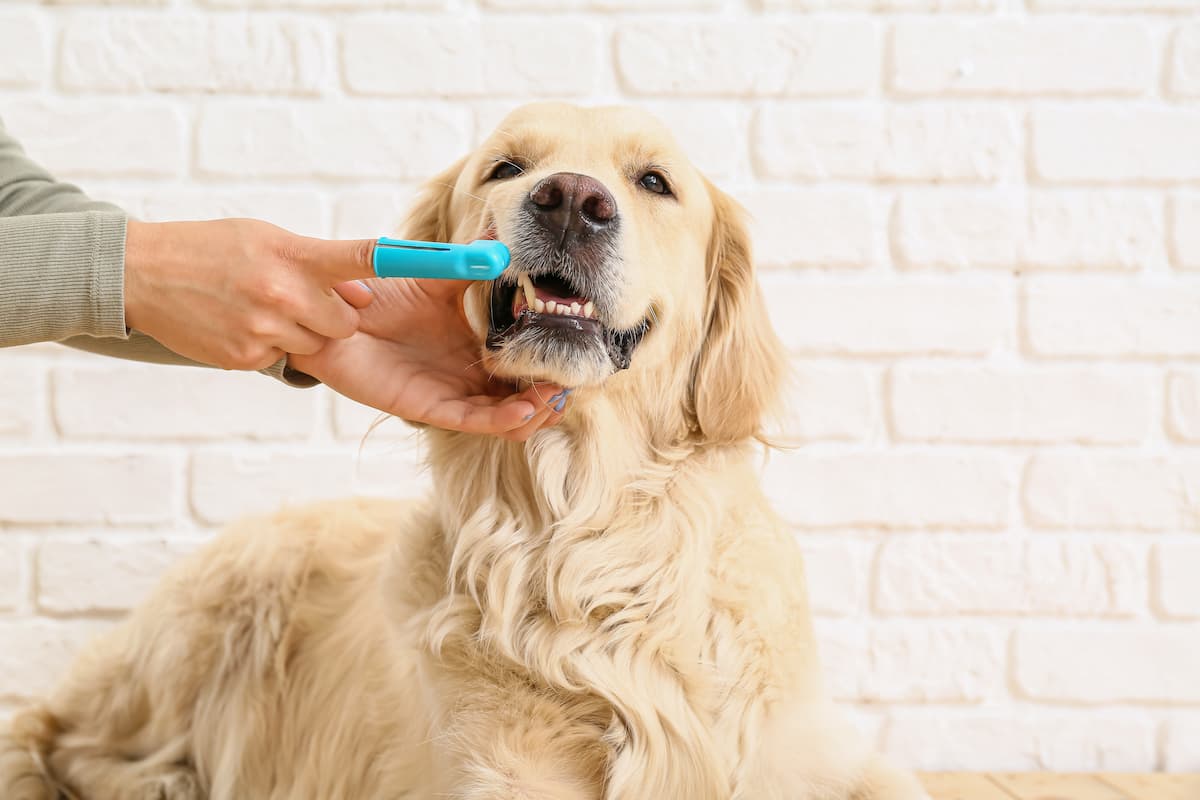Did you know that dental disease is the most common clinical condition in pets, with up to 80% of dogs displaying some form of periodontal disease by three years old?
Did you also know that there are a multitude of ways that you can help prevent these oral issues?
Unfortunately, the effects of periodontal disease aren’t limited to your dog’s mouth. It can also affect vital organs, such as the heart, when bacteria from the mouth leeches into the bloodstream. Additionally, dogs need to satisfy a natural urge to chew, so sore teeth and gums can affect their overall wellbeing.
Still, there is hope in the form of regular oral care practices and veterinary checkups. Today, we will guide you through the best methods of keeping your dog’s teeth and gums healthy, with all the best tips to make dog teeth cleaning easier.
The importance of dog teeth cleaning for overall health
Dog teeth cleaning is crucial in keeping your pup happy and healthy. Without regular oral care, dogs are susceptible to plaque and tartar buildup, periodontal disease, gingivitis, and oral infections.
Bacteria create plaque, a white substance that sits on teeth; if the plaque isn’t brushed away, it develops into tartar—a yellow or brown mineral—that only your veterinarian can remove with specialised scraping tools.
Tartar leaves your dog vulnerable to gum disease and tooth loss. Common symptoms include discoloured deposits on the teeth and a swollen red gum line, referred to as gingivitis. Gingivitis is an inflammation of the gums that precedes periodontal disease. It is crucial to treat gingivitis to prevent it from developing into periodontitis.
Peridontitis is a more severe form of tooth disease that also affects the gums, ligaments, and bones. The resulting bone loss and soft tissue create pockets in the gums where harmful bacteria can gather. Over time, this can lead to tooth decay and tooth loss.
For these reasons, regular vet checkups are crucial, especially if you notice any of the following symptoms:
- Discoloration of teeth or visible tartar
- Inflamed or bleeding gums
- Bad breath (halitosis)
- Difficulty eating food
- Weight loss
- Excessive drooling
- Grinding teeth
- Pawing at their mouth
- Loose teeth
Oral health doesn’t just impact your dog’s mouth. When bacteria from the mouth enters the bloodstream, it can create issues in other areas of the body. The bacteria associated with dental disease are also linked to heart, liver, and kidney health.
Looking after your dog’s oral health may be easier than you think. Below, we will discuss some dog teeth cleaning methods and tips to ensure your routine is easy and efficient.

Forms of dog teeth cleaning
Brushing may be the best, most effective way of cleaning your dog’s teeth, but it’s not the only way. Here are other options to explore to see which works best for your pup.
Brushing
Brushing is the most effective way to clean your dog’s teeth, ideally once a day, though three times a week can make a significant difference.
You’ll need a dog or finger toothbrush shorter than a regular toothbrush and with softer bristles, plus dog toothpaste. Canine toothpaste comes in various yummy flavours—such as chicken and beef—that your dog will love. Most importantly, it doesn’t contain the toxic ingredients (xylitol) that human toothpastes contain.
Move the brush in small circles, starting with the front, easy-to-access teeth, before moving to the back teeth and gums. Aim to brush your dog’s teeth for around two minutes per day.
Dental chews
Dental chews are tasty treats that help clean plaque and tartar from the surface of your dog’s teeth. Your dog will enjoy the yummy taste so much they won’t even realise they’re cleaning their teeth! And in addition, chews can freshen your dog’s breath and massage their gums.
Still, you will need to combine chews with other methods, like brushing, for maximum effectiveness.
Toys
Doggy dental toys are designed to be chewed for long periods to remove plaque and tartar from your dog’s teeth. These toys are often made of rubber and come in unique shapes allowing them to brush closely to the teeth. In addition, the saliva produced from chewing the toy helps to clean the teeth and wash away debris.
Ensure that chews are size-appropriate—your dog could choke if they’re too small. Check regularly for holes or damage. Choose a long-lasting product like rubber, nylon, or rawhide, but avoid bones and other hard objects that could break or damage your dog’s teeth.
These toys last longer than treats, offering a cost-effective dog teeth cleaning method. But in order to be effective, your dog needs to consistently chew for around 30 minutes a day—ideal for dogs who love to bite and chew their toys!
Water additives
Water additives offer a dog teeth cleaning method that helps to freshen their breath while using enzymes to break down plaque and tartar. Live bacteria create a coating in your dog’s mouth called the biofilm. Water additives help to break down this biofilm while attacking the bacteria to improve your dog’s oral health.
And remember to add a professional cleaning to your pet’s calendar at least once a year.
Tips for easy dog teeth cleaning
Introducing teeth cleaning into a puppy’s routine is the best way to acclimate them to the practice as they get older. Still, it’s better late than never, and you can train an adult dog with a toothbrush; you may just need a little extra patience.
Ensure you have the correct tools. Try dog-specific toothbrushes or a finger brush to see which your dog feels more comfortable with, and choose their favourite flavour toothpaste so that they enjoy the taste.
Remember: never use human toothpaste on your pup; it contains toxic ingredients like xylitol.
Give your dog time to become accustomed to you touching their mouth. Begin with a light touch to the muzzle before progressing to their teeth and gums. Begin this process a few days before you start to brush their teeth.
Allow your dog to familiarise themselves with their oral care kit. This might include placing a dollop of toothpaste on the brush and allowing your dog to smell and taste it.
Build teeth cleaning into your dog’s daily routine; remember, consistency is key. Choose a time when they are calm and relaxed.
Use dental chews and toys to reward your dog for a successful teeth brushing session. This will encourage them to continue practising and learn to associate it with a positive experience.
Maintaining oral health is critical to optimising your dog’s overall health and wellbeing. The best approach is to create a routine that incorporates various methods to keep plaque and tartar at bay, while ensuring that regular vet checks are a part of your care plan.
